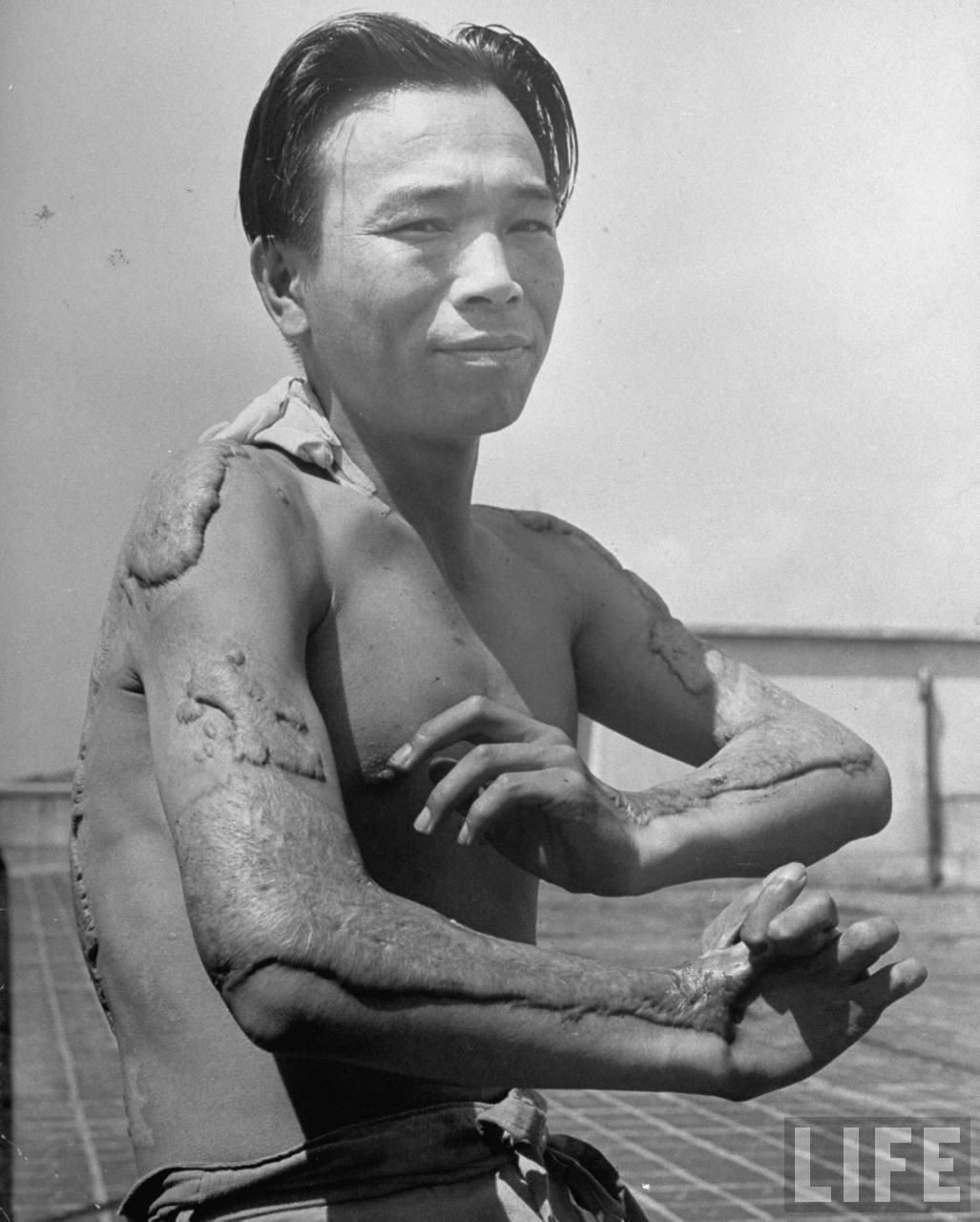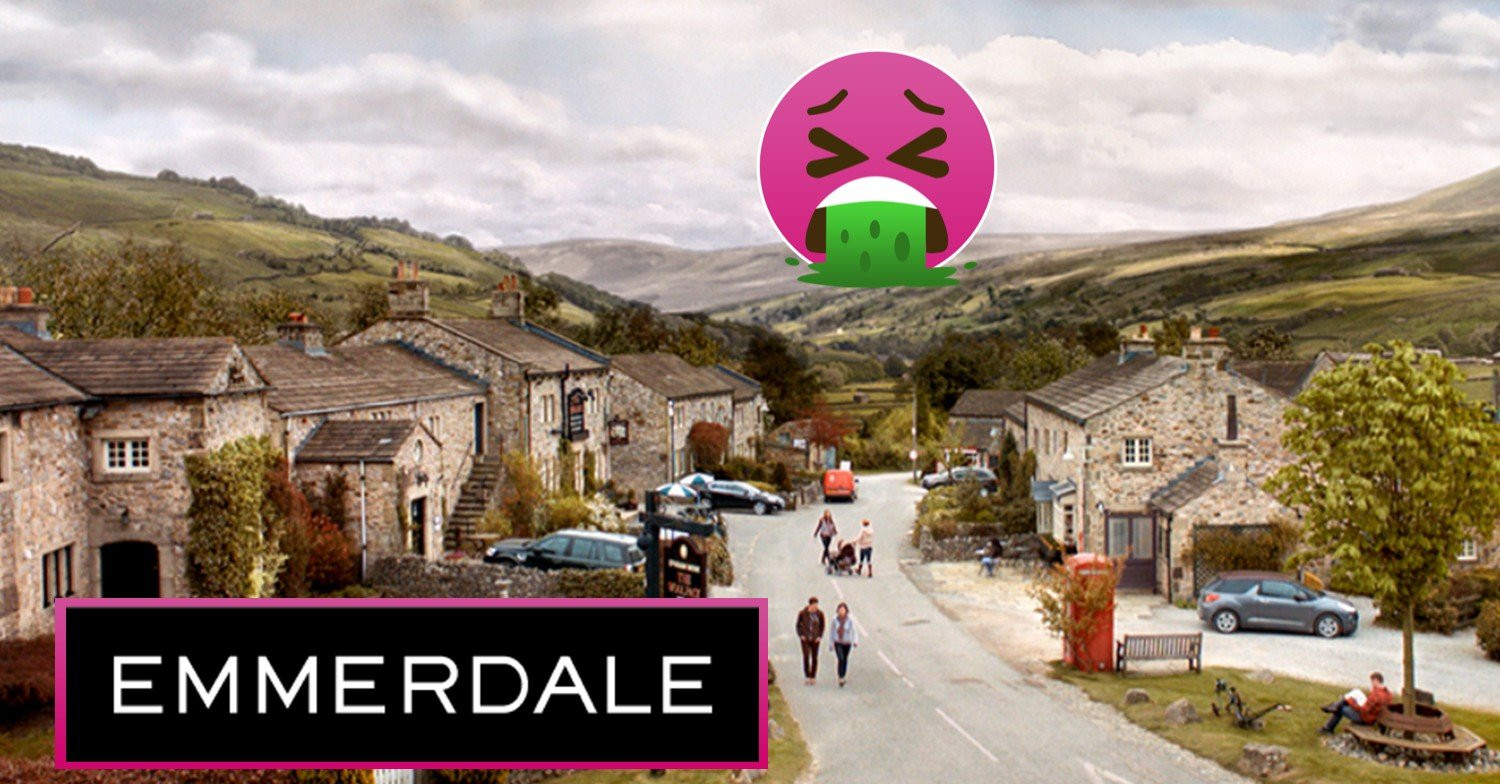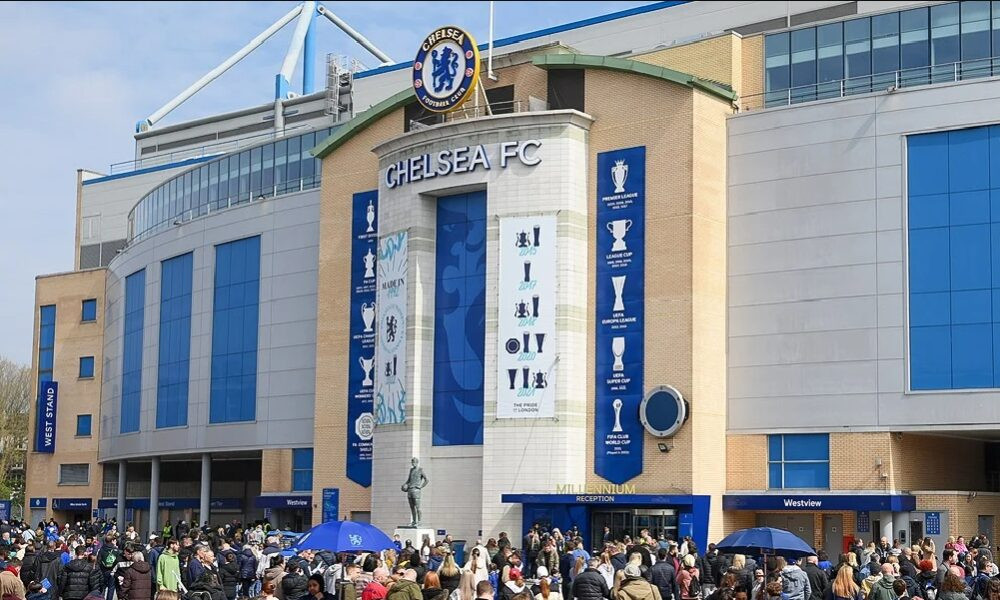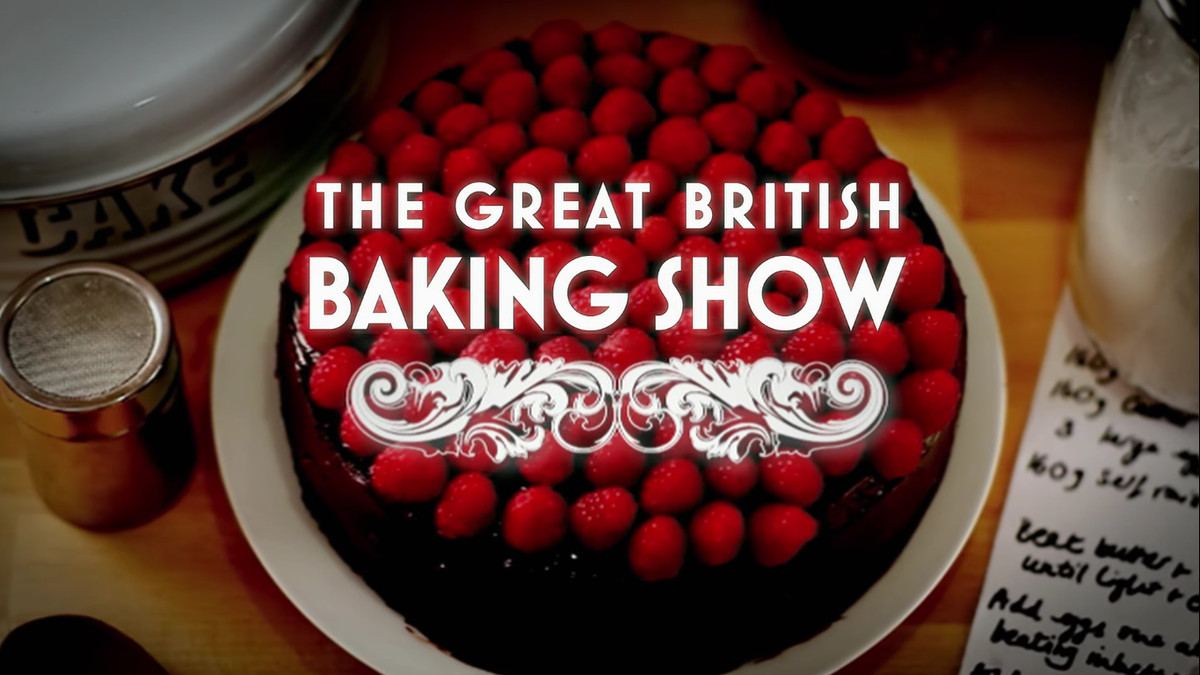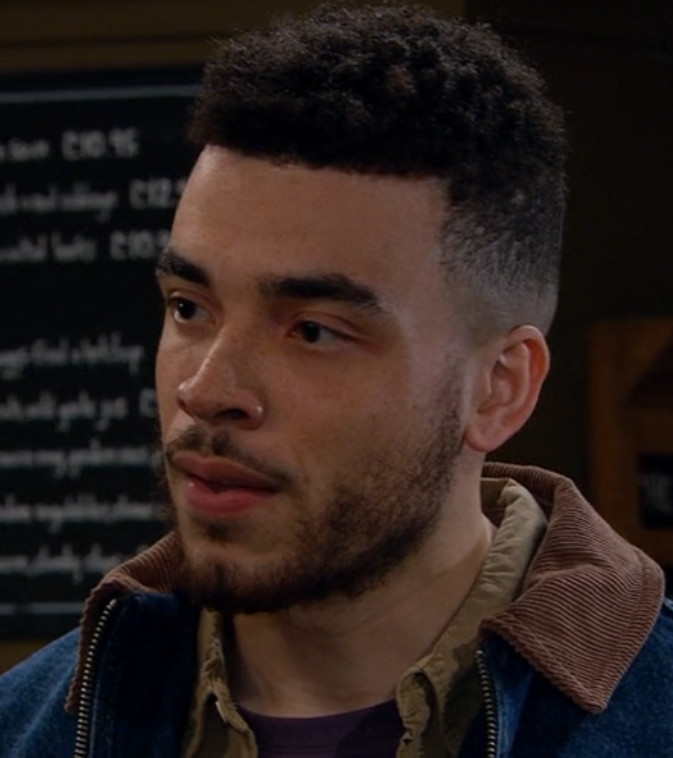This unforgettable, vital film gathers the testimony of the ‘Hibakusha’ – the generation who survived the horror of Hiroshima and Nagasaki
Atomic People (BBC Two) is a horrifying watch from start to finish. Well, almost from the start. The first moments of this unforgettable documentary briefly offer delight: an elderly Japanese man singing You Are My Sunshine, explaining with a smile that he learned English from John Wayne Westerns and Tarzan. “I really enjoyed American films,” he said. Then his face darkened. “But I hated America for what they did.”
This was the testimony of the “Hibakusha”, survivors of the bombing of Hiroshima and Nagasaki. Most were children at the time, some very young. What they described, accompanied by archive footage, was so harrowing that more than once I had to pause the programme. “How do I explain this?” said one man who had been eight at the time, and who recalled seeing a woman emerge from near the epicentre of the bomb, swaying as she walked. “With both her hands she was holding something. When I looked closely, her entire body was ripped open. And she was holding her internal organs with both her hands and asking me, ‘Where is the hospital?’”
The Horrifying Aftermath
Horror stories piled upon horror stories. “A baby, burnt black as coal, being held tightly by a young mother.” “Their flesh was melting, and their eyeballs were dangling down.” “Long, black, seaweed-type things trailing from their legs… it was skin from their legs which had peeled off and collected around their ankles.” Charred bodies still attached to the hanging straps in a burnt-out train. Dying people crying out for their mothers and pleading for water. “I still wish I could give them a bucket full of water,” says one survivor who tried in vain to ease their suffering. She continues to say a prayer for them. “Please, drink a lot of water,” she tells their souls.
You will not have enjoyed reading any of that. But just as the BBC has produced documentaries featuring the unflinching testimonies of British Holocaust survivors, so it has done a vital thing in preserving the memories of the Hibakusha. They now campaign, including via an address to the United Nations, for nuclear disarmament. An impossible dream, but they want us to know the full reality of what these terrible weapons can do.
The Lasting Trauma
Cruelly, surviving the bombs did not mean an end to the suffering. Radiation sickness, leukaemia, deformed babies – all this lay ahead, and the Hibakusha were shunned by many. The US Atomic Bomb Casualty Commission conducted tests on the survivors in buildings that looked like hospitals but provided no medical care.
Of course Japan committed atrocities of its own during the war, and the bombings achieved their aim by bringing the conflict to an end. But after watching this film, hearing Harry S Truman describe the atom bomb as “the greatest achievement of organised science in history” was grotesque.
A Call to Action
Atomic People is on BBC Two at 9pm tonight; available on BBC iPlayer now
PEOPLE screaming for help with their skin hanging off or desperately trying to push their exposed internal organs back into their bodies.
These are the harrowing memories etched on the brains of Japan’s ‘Hibakusha’ - the only people in the world to have survived an atomic bomb.
By 1940, Japan had joined Germany in the war against America and Britain. On December 7, 1941, the Japanese air force attacked a US naval base at Pearl Harbour in Hawaii, killing 2,400 people.
Shortly after the Pearl Harbour attack, the US began work on a secret mission led by physicist J Robert Oppenheimer in the Los Alamos desert in New Mexico, using nuclear fission to create the world’s first atomic bomb.
But even when Germany surrendered to the Allies in May 1945, the Japanese continued their fight.
On August 6, 1945, the United States dropped an atomic bomb on the Japanese city of Hiroshima, the first time such a weapon had been used in an act of war.
Despite the devastation, the US dropped a second bomb on the city of Nagasaki three days later. Many were killed instantly, but others suffered a slow and agonising death from the effects of radiation poisoning.
It is estimated that 210,000 people died in Hiroshima and Nagasaki that year.
Now almost 80 years on, the last remaining survivors - known as ‘Hibakusha’ in Japan - have shared their stories in a new BBC Two film, Atomic People, to ensure the world does not forget the devastation and suffering.
Chieko Kiriake was 15 years old in 1945 and recalls a stark warning sent by the US, explaining: “One day the Americans scattered leaflets in Hiroshima.
“On them it said, ‘From America’s President Truman to the people of Hiroshima. In the near future a terrible bomb will be dropped, and if you want to live you must leave Hiroshima.’
“Our teachers crumpled them up and threw them to burn in the furnace. We should have taken it seriously.”
Shigeaki was just eight years old and on his way to school when the bomb landed.
“I was flung into a river,” he says. “The centre of Hiroshima became a vacuum.
“Everything got sucked in and rose up into the sky. To a height of 17,000 metres, it soared up. It became pitch black, and I couldn’t see ten centimetres in front of me.
“I extended my fingers in front of my eyes. I tried to count them one by one, to check if I still had my ten fingers, but it was so dark that I couldn’t see them.
“So I stayed still in the river, with the overgrown aquatic plants. Around an hour passed, and the visibility increased. And then, I saw a woman in her twenties walking towards me.
The Unforgettable Memories
Even now I cannot forget it, it was a scene from hell The people who were escaping towards us most of their clothes had completely burned away. And their flesh was melting
“She had come from the hypocentre. She was swaying, even now... How do I explain this?
“She looked as if she was about to fall down. And with both her hands, she was holding something.
“And what was she holding? When I looked closely, her chest was ripped open. Her entire body was ripped open, and it was covered in blood.
“And she was holding her internal organs, with both her hands, and she asked me, 'Where is the hospital? Where is the hospital?'”
Seven-year-old Michiko Kodama’s school desk saved her when the bomb went off.
“My desk was by the window at the front,” she remembers.
“Through the windows, there was an intense light speeding towards us. It was yellow, orange, silver. A light approaching us that words can’t describe.
“I was under the desk so I could move. I looked around and in every direction I could see hands and legs trapped and I crawled from the classroom to the corridor and my friends were saying, 'help me'. I left them.”
The Haunting Reality
The flames circled them, making the corpses move. The feet would shoot up. The arms would shoot up
Michiko went on to lose her mother, father, and brothers to cancer.
But she has never forgotten the trauma of the walk home from school that day.
“The rain that came was like mud, the black rain,” she says.
“My father came to collect me from school. He carried me home on his back and that journey home was really...
“Even now I cannot forget it, it was a scene from hell. The people who were escaping towards us... most of their clothes had completely burned away. And their flesh was melting.
“And from the intense blast, their eyeballs were dangling down. A baby, burnt black as coal, being held tightly by a young mother, and the mother’s back was dripping from being burnt.
“There were so many people like that, the streets full of them. They would cling on to us, but there was nothing you could do.
“And then a girl, all alone, probably the same age as me, she was also melting from burns, her face too. But her eyes were wide open. I turned back to watch the girl. She collapsed.
“That girl’s eyes, they pierce my soul, I can’t forget her even though 78 years have passed. She is seared into my eyes, mind, and soul.”
So many children died that teachers instructed the surviving students to cremate and bury their friends who hadn’t made it.
Chieko Kiriake, now 94, recalls: “At around 8 o’clock, I thought I need to take a break in the shade and wipe the sweat from my brow.
“It felt like the sun had fallen and I felt dizzy. I was blown back and lost consciousness.
“I carried my friend with her injured forehead on my back, tottering, until we got back to the school.
“A number of the students returned to the school, with long, black seaweed-like things trailing from their legs.
“'I thought, what are those things that look like seaweed?' It was the skin from their legs which had peeled off and collected around their ankles.
“We rubbed on old tempura oil from the home economics classroom, that was the only treatment we could give them. They died one after the next.
The Manhattan Project
Production of an atomic bomb started during World War Two in Los Alamos, New Mexico.
It was done under the code name The Manhattan Project and the initial test bomb was created from plutonium.
Nuclear physicist J. Robert Oppenheimer was tasked with creating the weapon of mass destruction by Major General Leslie Groves.
Research started in 1942 in Manhattan, hence the project's named.
Around 130,000 people were employed to work on it, at its peak, and it cost nearly $2 billion. It absorbed a British research programme called the Tube Alloys.
The research, which took place across 30 different sites in the UK, USA and Canada, produced two different types of bombs - a gun-type fission weapon and a more complex implosion-type nuclear weapon.
A prototype was successfully tested on July 16, 1945, at a site 120 miles south of Albuquerque, New Mexico.
Both types of bomb were dropped on Hiroshima and Nagasaki in 1945.
“Us older students who survived were instructed by our teachers to dig a hole in the playground, and I cremated them with my own hands. I felt so awful for them.
“The flames circled them, making the corpses move. The feet would shoot up. The arms would shoot up.
“I stood there shaking, and saw the entire thing. The cremated remains were a pink, a pale pink colour, just like cherry blossom petals.
“For the first time, tears welled up, and I cried as I collected the bones. Then my teacher spoke again. They said, 'Bury them over there.' So we buried them under the soil.”
Japan surrendered just nine days after the Hiroshima bomb on August 15, bringing World War Two to an end, and just weeks later US forces began arriving in Japan to take control.
A press code was soon issued to the Japanese media, banning any criticism of America and reporting on the atomic bombs and their effects ceased.
Hiroshi says: “If Hibakusha spoke about their experiences, they were threatened that they would be arrested and sent to do hard labour in Okinawa. So everyone stopped talking about their experiences.”
In 1952 Japan regained independence - and the press were free to report what the atomic bomb had done to people.
But ignorance meant the survivors were soon tarnished, with some people believing they had infectious diseases and therefore shunned them.
In 1956 the survivors across Japan came together to campaign for compensation, medical assistance and nuclear disarmament.
A year later, Atomic IDs were issued to officially recognise Hibakusha, providing free health examinations and medical benefits.
Campaigning for full compensation from the government and the abolition of nuclear weapons continues to this day.
Survivor and campaigner Sueichi Kido, now aged 83, says: “The atomic bombs dropped on Hiroshima and Nagasaki caused damage to the lives, bodies, livelihoods and hearts of Hibakusha.
“I am now terrified that a nuclear war could start. The risk is growing. The scenes reported from Ukraine and Gaza are, for us Hibakusha, like a return to that day.
“If nuclear war were to break out, we would be left with nothing but blackened cities, piles of corpses and a world of only death.
“These are weapons of madness with the sole purpose to exterminate human beings. They are weapons of evil that we must not and cannot accept.”
Atomic People is on BBC Two tonight at 9pm and on iPlayer




